2012 巻, 23 号
日本舌側矯正歯科学会会誌
選択された号の論文の11件中1~11を表示しています
- |<
- <
- 1
- >
- >|
-
2012 年 2012 巻 23 号 p. 3-12
発行日: 2012年
公開日: 2014/07/17
PDF形式でダウンロード (1257K) -
2012 年 2012 巻 23 号 p. 13-22
発行日: 2012年
公開日: 2014/07/17
PDF形式でダウンロード (1318K) -
2012 年 2012 巻 23 号 p. 23-30
発行日: 2012年
公開日: 2014/07/17
PDF形式でダウンロード (450K) -
2012 年 2012 巻 23 号 p. 31-42
発行日: 2012年
公開日: 2014/07/17
PDF形式でダウンロード (3276K) -
2012 年 2012 巻 23 号 p. 43-53
発行日: 2012年
公開日: 2014/07/17
PDF形式でダウンロード (959K) -
2012 年 2012 巻 23 号 p. 54-64
発行日: 2012年
公開日: 2014/07/17
PDF形式でダウンロード (4862K) -
2012 年 2012 巻 23 号 p. 65-73
発行日: 2012年
公開日: 2014/07/17
PDF形式でダウンロード (1069K) -
2012 年 2012 巻 23 号 p. 74-76
発行日: 2012年
公開日: 2014/07/17
PDF形式でダウンロード (814K) -
2012 年 2012 巻 23 号 p. 77-138
発行日: 2012年
公開日: 2014/07/17
PDF形式でダウンロード (10952K) -
2012 年 2012 巻 23 号 p. 139-146
発行日: 2012年
公開日: 2014/07/17
PDF形式でダウンロード (561K) -
2012 年 2012 巻 23 号 p. 147-150
発行日: 2012年
公開日: 2014/07/17
PDF形式でダウンロード (424K)
- |<
- <
- 1
- >
- >|
